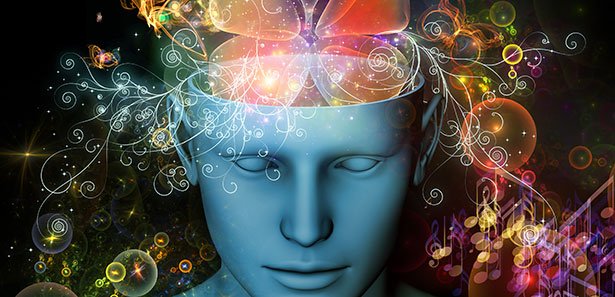How real are colors: All illusion? - Part 1

Are colors real or just a deception of our brain? © agsandrew/ thinkstockIs a tree really green - even if nobody sees it? And when we see colors, do we share this experience with others, or does each individual perceive something different? Mankind has been preoccupied with these questions for thousands of years - and science has given and gives different answers to them.
Part 1: All illusion? The debate about the reality of our perception
The question of whether sensual perception conveys the reality of the world to us, or rather an illusion, goes back to the pre-socratics.
There is only conventional opinion of colour, as well as sweetness and bitterness. In reality, there are only atoms and emptiness, said Democritus.
Odorless and tasteless silence

The bright yellow of this rape field seems to be hard to miss - but does it also exist outside our perception? © Toletek/ thinkstockToday, the same criticism of everyday perception can be found in neurosciences and neurophilosophy. For example, the American neuroscientist David Eagleman claims:
... the world around you, with its rich colours, textures, sounds and scents is an illusion, a show your brain presents to you. If you could perceive reality as it really is, you would be shocked by its colorless, odorless and tasteless silence.
Similarly, the neurophilosopher Thomas Metzinger states:
The delicate apricot pink of the setting sun is not a characteristic of the evening sky; it is a characteristic of the inner model of the evening sky, which is produced by our brain. It's just like the physics teacher at school told us: There's only one ocean of electromagnetic radiation out there in front of you.
Just a delusion...
From this neuro-constructivist point of view, the sensual experience is only a "phenospace", an illusion space that the brain equips for us with colours and sounds. Our conviction that we live in a colourful world is therefore based only on deception, a "naive realism". This undermining of life-world-experience follows the logic of the natural science program that has been established since modern times.
It aims at a conception of nature from which all qualitative, not measurable determinations are eliminated as mere subjective or anthropomorphic ingredients. For example, the scientist divides the phenomenon of color into physical wave movements on the one hand and a subjective sensation on the other. The same applies to warmth, sound, smell or taste: From now on they are only subjective ingredients for physically measurable reality.
Energy fields and matter particles?
John Locke canonized this concept in the 17th century by distinguishing between primary and secondary properties: primary or "real" are only the quantitative categories (volume, shape, number and movement), secondary or only subjectively all qualitative properties of the objects (colour, smell, taste, sound or warmth). The actual world would therefore be a rather desolate place of energy fields and matter particles.
The tree wouldn't actually be green, its blossoms didn't smell, the bird in its branches wouldn't sing melodically: All of this would only be functional illusory worlds, which the brain produces instead of naked material-kinematic processes.
Source: Prof. Dr. Dr. Thomas Fuchs, Universität Heidelberg: Ist der Baum Grün?

Cool post @n3bul4 🍻
Thank you! I am glad you like it!
This post has received a 1.06 % upvote from @booster thanks to: @n3bul4.